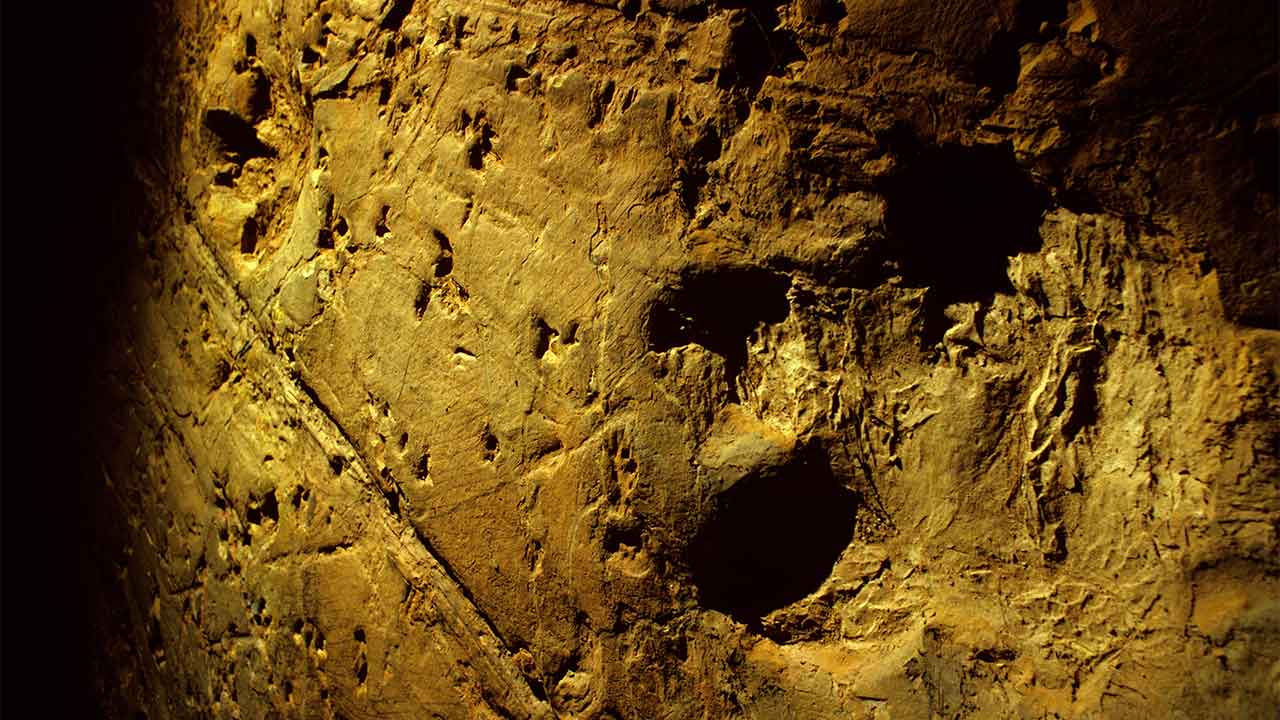AI may have solved a debate on whether a dinoprint was from a herbivore or meat eater

An international team of researchers has, for the first time, used AI to analyse the tracks of dinosaurs, and the AI has come out on top – beating trained palaeontologists at their own game.
“In extreme examples of theropod and ornithopod footprints, their footprint shapes are easy to tell apart -theropod with long, narrow toes and ornithopods with short, dumpy toes. But it is the tracks that are in-between these shapes that are not so clear cut in terms of who made them,” one of the researchers, University of Queensland palaeontologist Dr Anthony Romilio, told Cosmos.
“We wanted to see if AI could learn these differences and, if so, then could be tested in distinguishing more challenging three-toed footprints.”
Theropods are meat eating dinosaurs, while ornithopods are plant eating, and getting this analysis wrong can alter the data which shows diversity and abundance of dinosaurs in the area, or could even change what we think are the behaviours of certain dinos.
One set of dinosaur prints in particular had been a struggle for the researchers to analyse. Large footprints at the Dinosaur Stampede National monument in Queensland had divided Romilio and his colleagues. The mysterious tracks were thought to be left during the mid-Cretaceous Period, around 93 million years ago, and could have been from either a meat eating theropod or a plant eating ornithopod.
“I consider them footprints of a plant-eater while my colleagues share the much wider consensus that they are theropod tracks.”
So, an AI called a Convolutional Neutral Network, was brought in to be a deciding factor.
“We were pretty stuck, so thank god for modern technology,” says Dr Jens Lallensack, lead author from Liverpool John Moores University in the UK.
“In our research team of three, one person was pro-meat-eater, one person was undecided, and one was pro-plant-eater.
“So – to really check our science – we decided to go to five experts for clarification, plus use AI.”
The AI was given nearly 1,500 already known tracks to learn which dinosaurs were which. The tracks were simple line drawings to make it easier for the AI to analyse.
Then they began testing. Firstly, 36 new tracks were given to a team of experts, the AI and the researchers.
“Each of us had to sort these into the categories of footprints left by meat-eaters and those by plant-eaters,” says Romilio.
“In this the ai was the clear winner with 90% correctly identified. Me and one of my colleagues came next with ~75% correct.”
Then, they went for the crown jewel – the Dinosaur Stampede National monument tracks. When the AI analysed this it came back with a pretty strong result that they’re plant eating ornithopod tracks. It’s not entirely sure though, the data suggests that there’s a 1 in 5,000,000 chance it could be a theropod instead.
This is still early days for using AI in this way. In the future. the researchers are hoping for funding for a FrogID style app which anyone could use to analyse dinosaur tracks.
“Our hope is to develop an app so anyone can take a photo on their smartphone, use the app and it will tell you what type of dinosaur track it is,” says Romilio.
“It will also be useful for drone work survey for dinosaur tracksites, collecting and analysing image data and identifying fossil footprints remotely.” The paper has been published in the Royal Society Interface.
This article was originally published on Cosmos Magazine and was written by Jacinta Bowler.
Image: Getty Images
